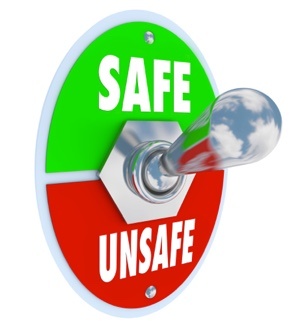 Are you interested in lowering your workers compensation insurance and related costs? Would you like to improve employee morale, increase production, and reduce absenteeism? Implementing a workplace safety program can do all that and so much more.
Are you interested in lowering your workers compensation insurance and related costs? Would you like to improve employee morale, increase production, and reduce absenteeism? Implementing a workplace safety program can do all that and so much more.
It is true that developing a safety program takes time and effort, and it can be difficult to measure the return on investment, but research has shown that it is definitely worthwhile.
$170,000,000,000.00 Per Year!
According to OSHA, “Businesses spend $170 billion a year on costs associated with occupational injuries and illnesses -- expenditures that come straight out of company profits. But workplaces that establish safety and health management systems can reduce their injury and illness costs by 20 to 40 percent. In today's business environment, these costs can be the difference between operating in the black and running in the red.”
And about that ROI… it’s been estimated that for every dollar invested in injury prevention, businesses will see a $2 to $6 return, according to Safety and Health Magazine. That's an ROI of 100% to 500%!
Here are four ways your business can benefit from implementing a safety program
#1. Lower Workers’ Compensation Costs
Often, workers compensation (WC) costs are one of the highest insurance costs in a business. It has been estimated that employers pay almost $1 billion per week for direct workers' compensation costs alone.
Three factors go into determining your workers comp insurance premiums: Classification Code, Payroll, and Experience Modification Rate. Classification codes are based on the type of business you’re in and the tasks your employees perform. There is a corresponding WC rate (which varies by state) for each classification code. The more hazards an employee is exposed to, the higher the rate. The amount of payroll a business runs annually also affects your WC premiums. There isn’t much you can do about these first two; they are what they are
But the third factor – your experienced modification rate – is something you have some control over. Every business is given MOD, which is a number that represents its insurance claim history. The average MOD is set at 1.00. If you have few or no history of claims, your MOD can go lower, which means lower premiums. The more claims you have, the higher your MOD goes, and the higher your WC premiums.
So, the best way to reduce your WC insurance premiums is to avoid workplace accidents, and the best way to do that is with an effective safety program.
In Pennsylvania, you can also receive a five percent discount on WC premiums if you have a safety committee that meets the requirements for state certification.
#2. Avoid OSHA Penalties
The Occupational Safety and Health Administration (OSHA) has stringent workplace safety guidelines that every business is expected to follow. Failing to abide by these rules and regulations can result in expensive fines.
Here is a list of OSHA’s penalties:
- $12,934 per violation for serious, other than serious, and posting requirements violations
- $12,934 per day beyond the abatement date for failure to abate
- $129,336 per violation for willful or repeated violations
In the fiscal year 2017, OSHA reported the most-citied violations were 6,887 violations regarding fall protection, 4,652 violations regarding hazard communication, 3,697 violations regarding scaffolding, and 3,381 violations regarding respiratory protection
Implementing a safety program specific to your industry and your business that follows OSHA’s guidelines can help you avoid costly fines. OSHA offers many publications on everything from roof tarping safety to preventing workplace violence to help you create a safer work environment and avoid OSHA’s penalties.
#3. Avoid Costly Accidents
Accidents can be costly. You may find yourself paying for an accident investigation, property damage repairs, insurance deductibles, administrative expenses, and recruiting, training and compensating replacement workers.
You may also face the hefty costs involved in a lawsuit. Accidents and lawsuits can also affect your reputation, which can affect sales and your ability to attract skilled employees. Avoiding accidents also can lower your worker's comp insurance premiums.
#4. Keep Employees Safe
Ensuring a safe work environment for your employees is the right thing to do and just makes good business sense. It should be your number one priority.
Safe work environments improve employee morale and make your place of business an attractive place to work. This usually means more productive employees, better service, a better quality product, and more skilled employees. OSHA estimates that lost productivity from injuries and illnesses cost businesses $60 billion every year.
If you want to see the financial rewards of a safety program, it’s essential to have a written policy in place and make it clear that safety is a priority and that the policies and procedures will be enforced. And you should continually provide safety training and look for ways to improve your safety program.
So, now that you have the facts in front of you, will you be taking the time to develop a workplace safety program?
Start Saving on All Your Commercial Insurance Needs
 To learn more ways to save on workers compensation insurance and all your commercial insurance policies, call American Insuring Group at (800) 947-1270 or (610) 775-3848, or contact us online.
To learn more ways to save on workers compensation insurance and all your commercial insurance policies, call American Insuring Group at (800) 947-1270 or (610) 775-3848, or contact us online.
Our independent agents will compare rates and policies among lots of competing insurance providers to get you the right policy at an unbeatable price.
Click or call today!







